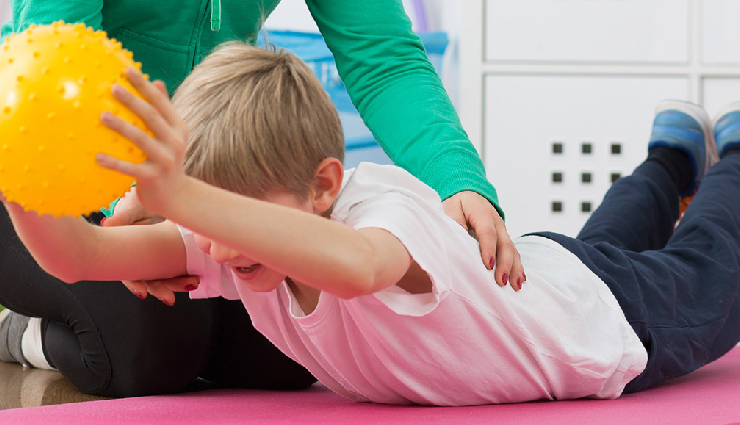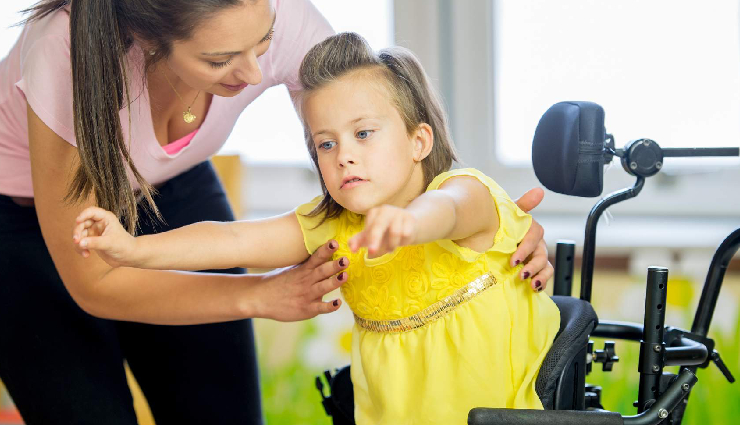- Home›
- Healthy Living›
- 10 Must Try Exercises To Treat Spina Bifida
10 Must Try Exercises To Treat Spina Bifida
By: Priyanka Maheshwari Tue, 19 Mar 2024 3:23:49

Spina bifida is a congenital neural tube defect that occurs when the spine and spinal cord don't develop properly in the womb. The term "spina bifida" literally means "split spine" in Latin, reflecting the condition where the neural tube, which typically closes early in fetal development, fails to close completely. This results in varying degrees of damage to the spinal cord and nerves, often leading to physical and neurological disabilities.
There are several types of spina bifida, with the most common being myelomeningocele, where a sac containing part of the spinal cord and its protective covering protrudes through an opening in the spine. Other types include meningocele, where the spinal fluid and protective covering protrude through an opening, and spina bifida occulta, where there is a small gap in the spine, but no protrusion of the spinal cord or its covering.
The exact cause of spina bifida is not fully understood, but it is believed to result from a combination of genetic, nutritional, and environmental factors. Folic acid deficiency in the mother's diet before and during early pregnancy has been identified as a significant risk factor.
Individuals with spina bifida may experience a range of symptoms and complications, including paralysis, bladder and bowel problems, hydrocephalus (excess fluid in the brain), orthopedic issues such as scoliosis, and cognitive challenges.
-1710841236-lb.jpg)
# Core Strengthening Exercises
Strengthening the core muscles can help improve stability and support the spine. Examples include pelvic tilts, abdominal bracing, and modified planks.
# Lower Body Strengthening
Exercises targeting the muscles of the legs and hips can enhance mobility and functional independence. These may include leg presses, squats, lunges, and hip abduction/adduction exercises.

# Stretching
Stretching exercises can help improve flexibility and reduce the risk of contractures (muscle tightness). Focus on stretching the muscles of the legs, hips, and lower back. Examples include hamstring stretches, quadriceps stretches, hip flexor stretches, and calf stretches.
# Balance and Coordination Exercises
Balance training can be beneficial for individuals with spina bifida, as it helps improve stability and reduce the risk of falls. Balance exercises may involve standing on one leg, using balance boards, or practicing yoga poses.

# Aquatic Therapy
Water-based exercises in a controlled pool environment can provide a low-impact way to strengthen muscles, improve range of motion, and enhance cardiovascular fitness. Swimming, water walking, and aquatic aerobics are all excellent options.
# Cardiovascular Exercises
Aerobic activities such as walking, cycling (recumbent or stationary), and adapted sports can help improve cardiovascular health, endurance, and overall fitness levels.
-1710841880-lb.jpg)
# Functional Training
Incorporate exercises that mimic daily activities or specific functional goals. For example, practicing sitting-to-standing transfers, wheelchair propulsion techniques, or using assistive devices during exercises can help improve independence in daily tasks.
# Posture Correction Exercises
Focus on exercises that promote proper posture and alignment to reduce strain on the spine. This may include shoulder blade squeezes, chin tucks, and chest stretches.
# Breathing Exercises
Deep breathing exercises can help improve lung function and respiratory efficiency. Encourage diaphragmatic breathing techniques and practice breathing exercises regularly.
# Adaptive Equipment and Assistive Devices
Utilize adaptive equipment and assistive devices as needed to facilitate safe and effective participation in exercises. This may include braces, orthotics, gait trainers, and specialized exercise equipment.





